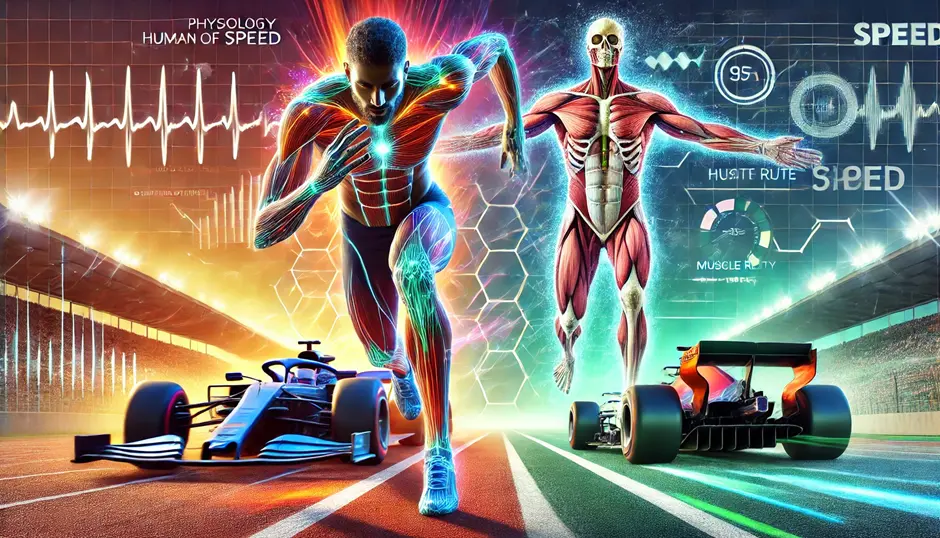The Science of Speed: How Athletes and Motorsport Are Redefining Human Limits
In the high-speed world of modern sports, the race to break records never stops. Fans and sports bettors alike follow this rapid evolution through platforms such as 1xBet promo codes and live odds to engage with this adrenaline-fueled arena. Technological innovation and human potential are working hand in hand to push boundaries once thought impossible.
Explosive Growth in Speed Across Sports
Over the past two decades, the speed of elite athletes and machines has improved dramatically. The men’s 100-meter world record has dropped from 9.95 seconds in 1968 to 9.58 seconds today. In Formula 1, top speeds have increased from 300 km/h to over 360 km/h within the same timeframe. These leaps are driven by advances in sports science and engineering.
Physiological Innovations in Sprinting
Elite sprinters are not born—they’re engineered through science, training, and adaptation. Studies analyzing the muscle structure of world-class sprinters reveal stark physiological differences compared to average runners.
A recent U.S. university study found that Olympic-level athletes can generate 45% more power during the initial push-off phase, enabling explosive acceleration over the first 10 meters. Even under fatigue, they maintain efficient stride mechanics.
Scientific data points to key characteristics among elite sprinters:
- Fast-twitch muscle fiber composition up to 80% higher than average
- Anaerobic power output roughly 35% greater
- Neural signal transmission speed exceeding the norm by 15%
- Shock absorption capacity up to 40% higher
- Exceptional fat metabolism efficiency
- Joint angles optimized for sprint mechanics
- Superior tendon elasticity to absorb and rebound from ground contact
Technology & Performance in Motorsport
Formula 1 stands at the cutting edge of engineering and human performance. Over the past decade, technological breakthroughs have redefined speed and control—from lightweight composite materials to advanced aerodynamic systems that drastically reduce drag.
Modern F1 cars now feature hybrid power units producing over 1,000 horsepower, weighing only 145 kg. Innovations like KERS (Kinetic Energy Recovery Systems) improve fuel efficiency by up to 30%, while next-generation chassis design—driven by computational fluid dynamics—reduces aerodynamic drag by over 20% compared to earlier models.
But it’s not just the cars. Drivers must withstand forces exceeding 5G, maintain laser-sharp reflexes, and make split-second decisions under extreme physical and mental strain.
How Sports Betting Adapts to Speed Evolution
The intersection of speed and technology has dramatically impacted the sports betting market. With the advent of real-time data, users on platforms like 1xBet can now monitor live odds and make informed bets based on dynamic variables.
Over the past five years, high-speed sports betting has surged by 40%, thanks to the growing availability of performance analytics. Gamblers now analyze biomechanical, environmental, and psychological factors that influence outcomes with unprecedented precision.
Tools such as real-time heart rate monitors, GPS tracking, and ground force sensors provide granular data that enhances both athlete performance and the accuracy of betting odds.
At the elite level, predictive models now account for:
- Weather and atmospheric pressure
- Humidity and track conditions
- Athlete injury history and recovery
- Mental state and psychological readiness
- For motorsports: tire strategy, engine settings, and team tactics
What’s Next for Speed in Sports?
The future of speed holds even greater possibilities. Sports scientists believe the limits of human performance are still far from being reached. In motorsport, the development of biotech-enhanced training and next-gen materials is expected to further revolutionize the field.
Research suggests that the fusion of biomechanics, bioengineering, and materials science will define the next era of speed—both by upgrading equipment and unlocking new levels of human capability.
Also Read-Innovative Technologies for Personalized Apnea Therapy: Automatic CPAP Machines
